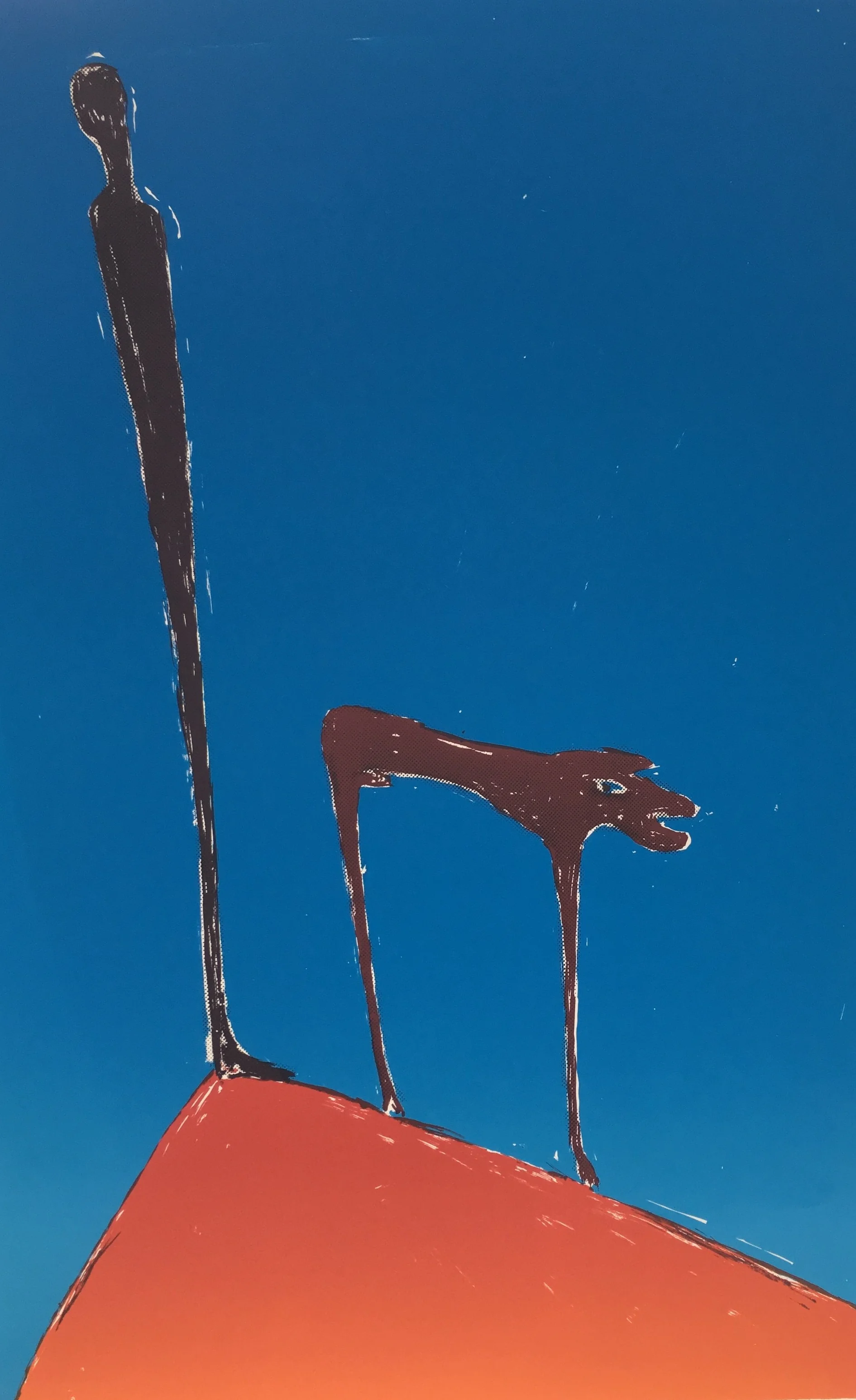Thanks to Giles Sutherland for reviewing this great show. Only one week left for you to see it...
WEDNESDAY 16 AUGUST 2017
John Taylor . Fragile . iota Gallery . 25 Hyndland Street . Glasgow Until 26 August STAR RATING: **** (FOUR)
Complementary Contrasts
Jenny Matthews . Angus McEwan . Smithy Gallery . 74 Glasgow Road . Blanefield Until 3 September STAR RATING *** (THREE)
John Taylor, master printmaker and a stalwart of the Glasgow art scene since the Sixties, is best known for his deftly handled studies of the city’s hidden landscapes. He finds fascination in the hinterland of canals, warehouses, pylons and doocots that others might dismiss as ugly clutter.
The well chosen title of this show in a small gallery-cum-architectural practice (run on a shoe-string by owners Monica McCarey and husband, Duncan Scott) shows another side of Taylor. Perhaps ‘Fragile’ refers to the state of the world or the artist’s physical or emotional presence, but the figures and scenes he depicts also exist in state of fragility.
These thin, elongated figures and forms exude menace and ephemerality. In one a pale, ethereal figure sits atop a misshapen animal; adjacent are the scrawled words, reminiscent of the voice of Revelation “And the beast shall walk the world”. Everyone will have their own interpretation of ‘the Beast’ but the artist’s view that ‘humanity still seems hell bent in heading for destruction’ seems clear.
Elsewhere, solitary or grouped figures, like Giacometti sculptures, stand against blue or purple-grey backgrounds, overwhelmed by threat and malice. In one beautiful, painful and traumatic image, two skeletal prisoners huddle in death-like repose on the floor of a box-like cell. Taylor evokes the agony of the human condition – torture, mutilation, death and despair. It’s heavy stuff that most would not display on their living room walls – and it’s altogether more significant because of that.
By contrast the work of water-colourists Jenny Matthews and Angus McEwan seems domestic, decorative and ‘art for art’s sake’. There is nothing wrong with that but it is difficult to reconcile such huge differences in approach and outlook. But perhaps it adds to interest of the world that artists can differ so enormously.
McEwan’s style is realist. He celebrates the textures and colours of decaying buildings, flaking paint-work and dilapidation. He transforms this into aesthetic interest. Technically, he’s brilliant, as is Jenny Matthews, a devotee and former pupil of Elizabeth Blackadder, that consummate purveyor of still-life, flowers, cats and domestic interiors.
Matthews unashamedly acknowledges her debt to Blackadder and creates colourful grouping of flowers and quasi-botanical studies, against white back-grounds. Her works are celebratory. They have their place and are undoubtedly popular, if not populist.
However, what John Taylor demonstrates is art’s capacity to ask the difficult questions about life, about which there are often no answers.
